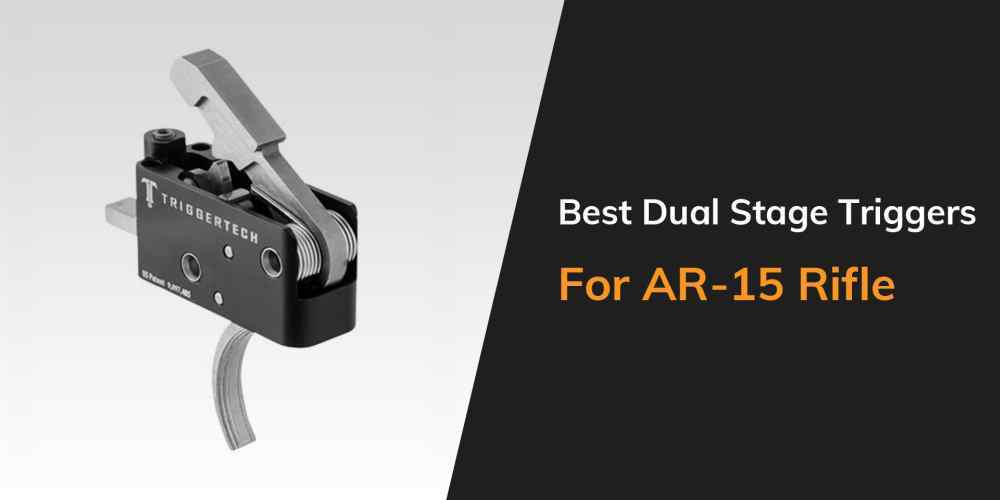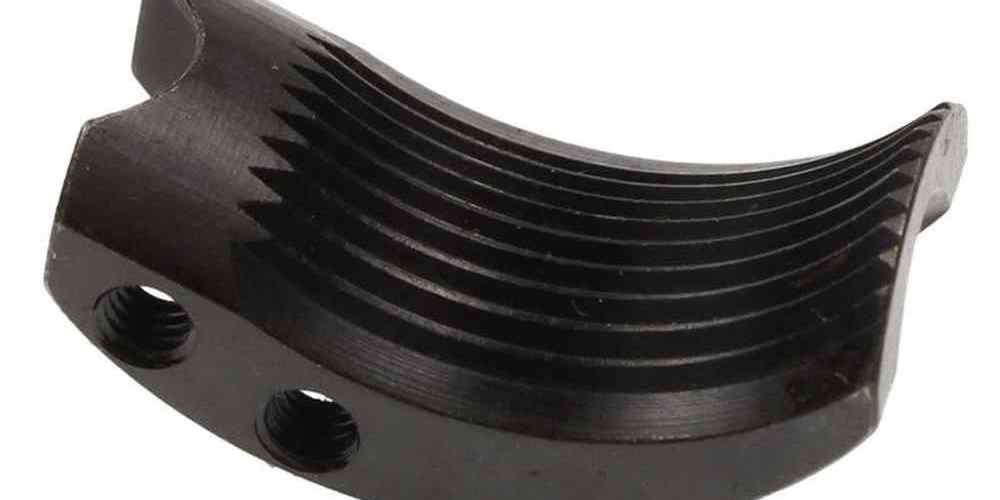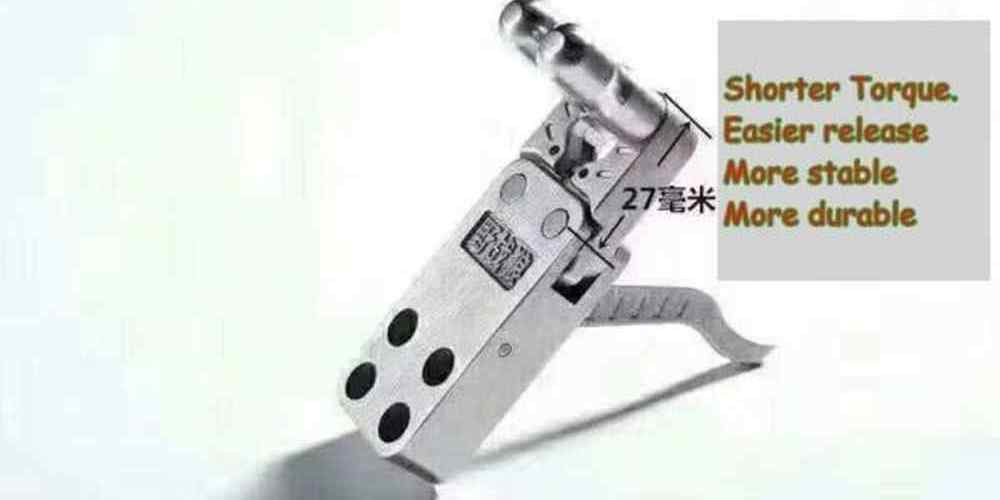“Precision and control in every shot – Rifle Triggers for military excellence.”
Benefits of Upgraded Rifle Triggers in Military Operations
Rifle triggers play a crucial role in military operations, as they are the mechanism that initiates the firing sequence of a firearm. Upgraded rifle triggers offer several benefits that can enhance the performance and effectiveness of military personnel in various combat situations.
One of the key benefits of upgraded rifle triggers is improved accuracy. A high-quality trigger can provide a smoother and more consistent pull, which can help soldiers maintain better control over their shots. This can be especially important in situations where precision is essential, such as long-range engagements or when engaging multiple targets in quick succession.
In addition to improved accuracy, upgraded rifle triggers can also help reduce the likelihood of trigger-related malfunctions. A reliable trigger mechanism is less likely to jam or misfire, which can be critical in high-pressure combat situations where split-second decisions can mean the difference between life and death. By investing in upgraded triggers, military personnel can have greater confidence in the reliability of their firearms.
Furthermore, upgraded rifle triggers can also contribute to increased safety for military personnel. A trigger with a lighter pull weight can help reduce the risk of accidental discharges, especially in situations where soldiers may be operating in close quarters or under stressful conditions. By providing a more predictable and controllable trigger pull, upgraded triggers can help minimize the potential for unintended firing incidents.
Another benefit of upgraded rifle triggers is improved ergonomics. A trigger that is designed with user comfort in mind can help reduce fatigue and strain on the shooter’s hand and wrist, allowing for more sustained and accurate shooting over extended periods of time. This can be particularly important in situations where soldiers may be required to maintain a high level of alertness and readiness for prolonged periods.
Additionally, upgraded rifle triggers can also offer customization options that allow military personnel to tailor their firearms to their individual preferences and shooting styles. Adjustable trigger pulls, trigger shoe designs, and other features can be fine-tuned to suit the specific needs and preferences of the shooter, helping to optimize performance and comfort in the field.
Overall, upgraded rifle triggers can provide a range of benefits that can enhance the performance and effectiveness of military personnel in various combat situations. From improved accuracy and reliability to increased safety and ergonomics, investing in high-quality triggers can help ensure that soldiers have the tools they need to succeed in their missions.
In conclusion, rifle triggers are a critical component of military firearms, and upgrading to high-quality triggers can offer a range of benefits that can enhance the performance and effectiveness of military personnel in combat situations. By providing improved accuracy, reliability, safety, ergonomics, and customization options, upgraded triggers can help soldiers maintain better control over their shots and operate more effectively in the field. Investing in upgraded rifle triggers is a worthwhile investment that can help ensure the success and safety of military personnel in a variety of operational environments.

Importance of Trigger Pull Weight in Military Rifles
When it comes to military rifles, every component plays a crucial role in ensuring the weapon’s accuracy and reliability. One such component that often gets overlooked is the trigger. The trigger is the mechanism that initiates the firing sequence of a rifle, and its importance cannot be overstated. In military applications, where split-second decisions can mean the difference between life and death, having a reliable and consistent trigger pull weight is essential.
Trigger pull weight refers to the amount of force required to pull the trigger and discharge the rifle. In military rifles, the trigger pull weight is typically set to a specific value to ensure consistency and accuracy in shooting. A lighter trigger pull weight can make it easier to shoot accurately, but it also increases the risk of accidental discharges. On the other hand, a heavier trigger pull weight can make it more difficult to shoot accurately, but it reduces the risk of accidental discharges.
In military applications, the ideal trigger pull weight is a balance between ease of use and safety. A trigger that is too light can lead to unintentional discharges, especially in high-stress situations where fine motor skills may be compromised. On the other hand, a trigger that is too heavy can make it difficult for the shooter to maintain accuracy, especially over long shooting sessions.
One way to achieve the ideal trigger pull weight in military rifles is through the use of adjustable triggers. Adjustable triggers allow the shooter to customize the trigger pull weight to their preference, while still maintaining a safe level of force required to discharge the rifle. This flexibility can be especially useful for military personnel who may have different preferences or shooting styles.
Another factor to consider when it comes to trigger pull weight in military rifles is the type of shooting being done. For long-range precision shooting, a lighter trigger pull weight may be preferred to ensure maximum accuracy. However, for close-quarters combat or rapid-fire situations, a heavier trigger pull weight may be more appropriate to prevent accidental discharges.
In addition to trigger pull weight, other factors such as trigger reset and trigger creep can also impact the performance of a military rifle. Trigger reset refers to the distance the trigger must travel forward after firing before it can be pulled again. A shorter trigger reset can allow for faster follow-up shots, while a longer trigger reset may be more suitable for precision shooting.
Trigger creep refers to the amount of movement the trigger has before it breaks and fires the rifle. A trigger with minimal creep can help improve accuracy and consistency in shooting, while a trigger with excessive creep can make it more difficult to shoot accurately.
In conclusion, trigger pull weight is a critical factor in the performance of military rifles. Finding the right balance between ease of use and safety is essential for ensuring accuracy and reliability in shooting. Adjustable triggers can provide the flexibility needed to customize the trigger pull weight to individual preferences, while factors such as trigger reset and trigger creep can also impact the overall performance of a rifle. By paying attention to these details, military personnel can ensure that their rifles are optimized for maximum effectiveness in any situation.
Comparison of Different Trigger Mechanisms in Military Firearms
When it comes to military firearms, the trigger mechanism is a crucial component that can greatly impact the performance and accuracy of the weapon. There are several different types of trigger mechanisms used in military rifles, each with its own set of advantages and disadvantages. In this article, we will compare some of the most common trigger mechanisms used in military applications.
One of the most widely used trigger mechanisms in military rifles is the single-stage trigger. This type of trigger mechanism is simple and straightforward, with a single pull required to fire the weapon. Single-stage triggers are known for their crisp break and minimal take-up, making them popular among shooters who prioritize speed and precision. However, single-stage triggers can be prone to accidental discharges if not properly maintained and can be more difficult to control for shooters with less experience.
On the other hand, two-stage triggers are another popular option for military rifles. Two-stage triggers have a longer pull and a distinct break point, allowing shooters to take up the slack in the trigger before firing the weapon. This can help improve accuracy and control, especially for shooters who prefer a more deliberate trigger pull. Two-stage triggers are also less prone to accidental discharges, making them a safer option for military applications. However, some shooters may find the longer pull of a two-stage trigger to be less conducive to rapid fire.
Another type of trigger mechanism commonly used in military rifles is the set trigger. Set triggers are designed to reduce the amount of force required to fire the weapon, allowing for a lighter trigger pull and improved accuracy. Set triggers are often used in precision shooting applications where a high level of control is required. However, set triggers can be more complex to operate and maintain, and may not be suitable for all shooters.
In recent years, electronic triggers have also become more prevalent in military firearms. Electronic triggers use sensors and microprocessors to detect when the trigger is pulled, resulting in a faster and more consistent firing mechanism. Electronic triggers can also be programmed to adjust the trigger pull weight and reset time, allowing for greater customization and control. However, electronic triggers can be more prone to malfunctions and may require additional maintenance and training to operate effectively.
Overall, the choice of trigger mechanism in a military rifle will depend on the specific needs and preferences of the shooter. Single-stage triggers are ideal for shooters who prioritize speed and simplicity, while two-stage triggers offer improved control and accuracy. Set triggers are best suited for precision shooting applications, while electronic triggers provide advanced customization and consistency. Ultimately, the best trigger mechanism for a military rifle will be one that balances the shooter’s needs for speed, control, and reliability.
Impact of Trigger Reset on Shooting Accuracy in Military Situations
When it comes to shooting accuracy in military applications, every detail matters. One crucial component that can greatly impact accuracy is the trigger reset of a rifle. The trigger reset refers to the distance the trigger must travel forward after firing a round before it can be fired again. In military situations, where split-second decisions can mean the difference between life and death, having a quick and consistent trigger reset is essential.
A rifle with a fast trigger reset allows the shooter to quickly fire follow-up shots without having to release the trigger all the way forward. This can be especially important in situations where multiple targets need to be engaged rapidly. A slow or inconsistent trigger reset can lead to delays in firing, which can be detrimental in high-pressure situations.
In addition to speed, the consistency of the trigger reset is also crucial for shooting accuracy. A rifle with a consistent trigger reset will allow the shooter to maintain a steady aim and follow-through, resulting in more accurate shots. In contrast, a rifle with an inconsistent trigger reset can lead to jerky movements and a loss of focus, resulting in missed shots.
One factor that can affect the trigger reset of a rifle is the quality of the trigger mechanism itself. A high-quality trigger mechanism will have a smooth and crisp reset, allowing for quick and precise follow-up shots. On the other hand, a low-quality trigger mechanism may have a mushy or gritty reset, making it difficult for the shooter to maintain accuracy.
Another factor that can impact trigger reset is the shooter’s technique. Proper trigger control is essential for achieving a fast and consistent reset. A shooter who jerks the trigger or fails to fully release it forward after firing a round will experience delays in reset, leading to decreased accuracy.
Training plays a crucial role in developing proper trigger control and maximizing shooting accuracy. Military personnel undergo rigorous training to ensure they are proficient in handling their weapons, including mastering trigger control. Regular practice and drills can help shooters develop muscle memory and improve their trigger reset speed and consistency.
In conclusion, the trigger reset of a rifle plays a significant role in shooting accuracy in military applications. A fast and consistent trigger reset allows for quick follow-up shots and helps maintain accuracy in high-pressure situations. Factors such as the quality of the trigger mechanism and the shooter’s technique can impact trigger reset, highlighting the importance of proper training and practice. By focusing on developing proper trigger control and mastering the trigger reset, military personnel can enhance their shooting accuracy and effectiveness in the field.
How Trigger Adjustability Enhances Performance in Military Applications
Rifle triggers play a crucial role in military applications, as they are the mechanism that initiates the firing sequence of a weapon. The performance of a rifle trigger can greatly impact the accuracy and effectiveness of a soldier in combat situations. In recent years, there has been a growing emphasis on trigger adjustability in military rifles to enhance performance and improve overall shooting capabilities.
One of the key benefits of trigger adjustability in military applications is the ability to customize the trigger pull weight to suit individual preferences and shooting styles. A lighter trigger pull weight can improve accuracy and reduce fatigue during extended shooting sessions, while a heavier trigger pull weight can provide added safety and prevent accidental discharges. By allowing soldiers to adjust the trigger pull weight to their liking, rifle triggers with adjustable features can help optimize performance in various combat scenarios.
In addition to trigger pull weight, trigger adjustability can also include features such as trigger travel and reset distance. These adjustments can further enhance shooting performance by allowing soldiers to fine-tune the trigger to their specific needs and preferences. A shorter trigger travel and reset distance can improve response time and increase shooting speed, while a longer trigger travel can provide added control and stability for more precise shots. By offering a range of adjustability options, rifle triggers can be tailored to meet the unique requirements of individual soldiers and improve overall shooting performance in military applications.
Another important aspect of trigger adjustability in military rifles is the ability to accommodate different shooting environments and conditions. Soldiers may encounter a variety of situations in the field, from close-quarters combat to long-range engagements, each requiring a different approach to shooting. By adjusting the trigger to suit the specific demands of the environment, soldiers can adapt quickly and effectively to changing circumstances, improving their overall performance and effectiveness in combat situations.
Furthermore, trigger adjustability can also play a role in enhancing weapon safety and reliability. By allowing soldiers to adjust the trigger to their liking, rifle triggers with adjustable features can help prevent accidental discharges and ensure consistent performance in various conditions. A well-adjusted trigger can provide a smooth and predictable shooting experience, reducing the risk of malfunctions and improving overall weapon handling and control.
Overall, trigger adjustability in military applications offers a range of benefits that can significantly enhance shooting performance and improve overall effectiveness in combat situations. By allowing soldiers to customize their triggers to suit their individual preferences and shooting styles, rifle triggers with adjustable features can help optimize performance, increase accuracy, and improve weapon safety and reliability. As technology continues to advance, we can expect to see even more innovative features and improvements in rifle triggers that will further enhance the capabilities of military rifles and the soldiers who rely on them.




